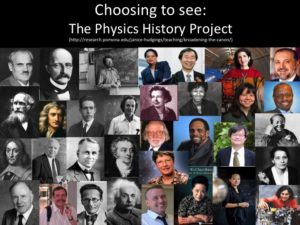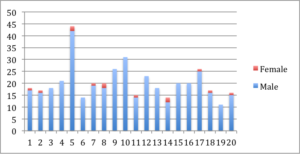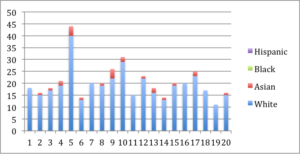The undergraduate physics education canon should be broadened to include the contributions of a widely diverse community.

(Curricular theme: Introduction to Modern Physics, Fall 2016)
-
The problem: the physics education canon focuses on the achievements of white men.
Modern Physics is a core physics course, traditionally taught nationwide to sophomores intending to major in physics. As a discipline, we view this gateway course as an introduction to the recent accomplishments, and indeed the culture, of the discipline. However, there is an unarticulated subtext: we present the history and accomplishments of “modern physics” through a very narrow lens, focusing heavily on the work of white, European and American men, while largely ignoring major contributions by others. This exclusive presentation of physics makes it very difficult for many of our prospective majors to see reflections of themselves in the discipline and certainly does not make for very inclusive teaching! It’s a small wonder that participation by women in physics continues to stubbornly hover in the vicinity of 20% and the numbers for students of color are even worse.
-
Test yourself: Sketch out a quick timeline of accomplishments in modern physics.
First, try this yourself: sketch out a quick timeline of accomplishments in modern physics. Then make a note of the gender and ethnicity of the scientist(s) who made each contribution.
I asked each student in my class to do the same thing in Homework 1:
“Since this is a modern physics course…please sketch out a timeline of major events that comprise the development of “modern physics.” You can choose to define “modern” however you want. I myself might start with the foundations of quantum mechanics in the early 1900s, but you could equally decide that you want to focus on, say, the last 20 years. Regardless, you probably shouldn’t start before 1900 or so, and you should definitely run up to the present.
In your timeline, please give the date (or at least the year) of the accomplishment, who did the work, and a few sentences about what the accomplishment involved. You are welcome to use the web or other resources for this, but please use more than one resource – please don’t, for example, just give me a list of Nobel Prize winners – and cite your references. Try to aim for around 20 or so entries in your timeline.”
-
The results…speak louder than words.
Here, in aggregate, are the results from our initial timelines. In each of these plots, the horizontal axis shows the data for each individual student, where the students are numbered 1-20. The vertical axis shows the number of entries that were male vs female, etc. So, in the first plot below, Student 7 submitted a timeline with 20 entries, of which one was an accomplishment by a female physicist.
-
Why is this all we know?
In Homework 2, I asked students to think about the patterns they noticed in the above demographics (!), and to “reflect briefly on why these trends may have occurred.” Their responses are very briefly summarized here: Thoughts on why. And, a disclaimer: these are student responses, some of which do not reflect my views.
-
A REAL view of modern physics
For the remainder of the semester, I asked students to work on timelines of their own, looking at contributions by groups whose work is not traditionally emphasized in our physics classes. As you look through these timelines, notice how many Nobel Laureates and major public figures are included. How many of these accomplished physicists appeared in your initial timeline? Pretty striking, yes?


